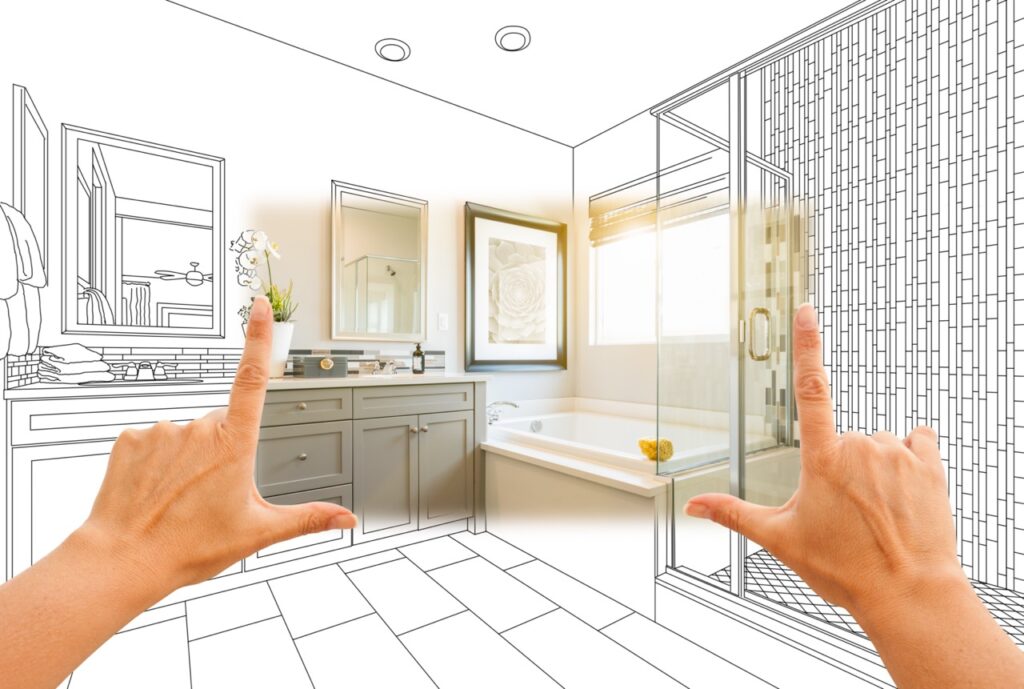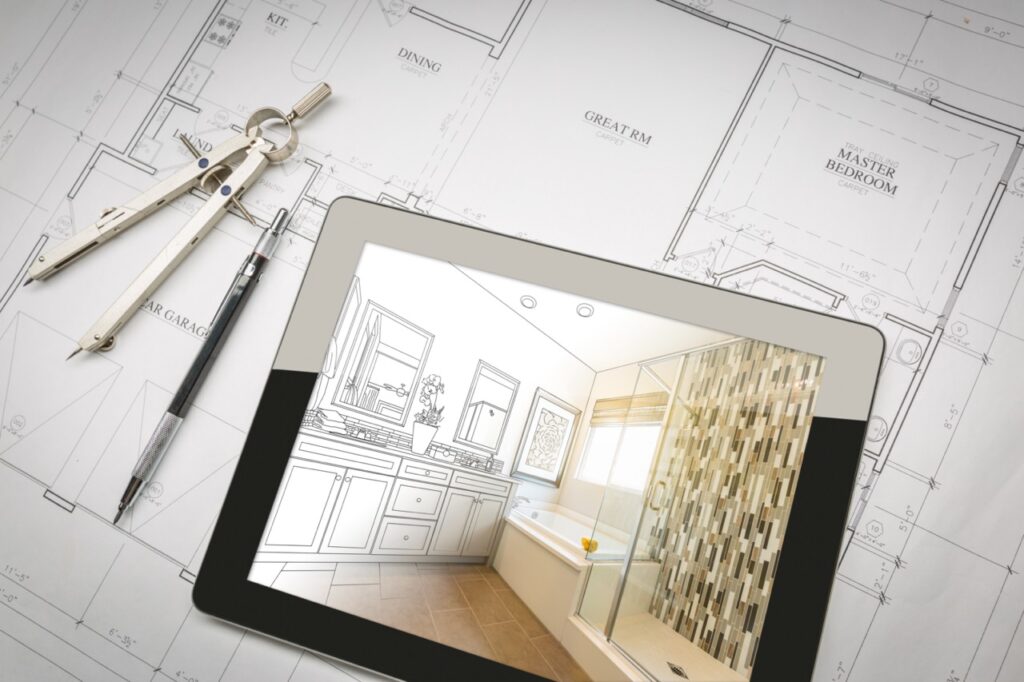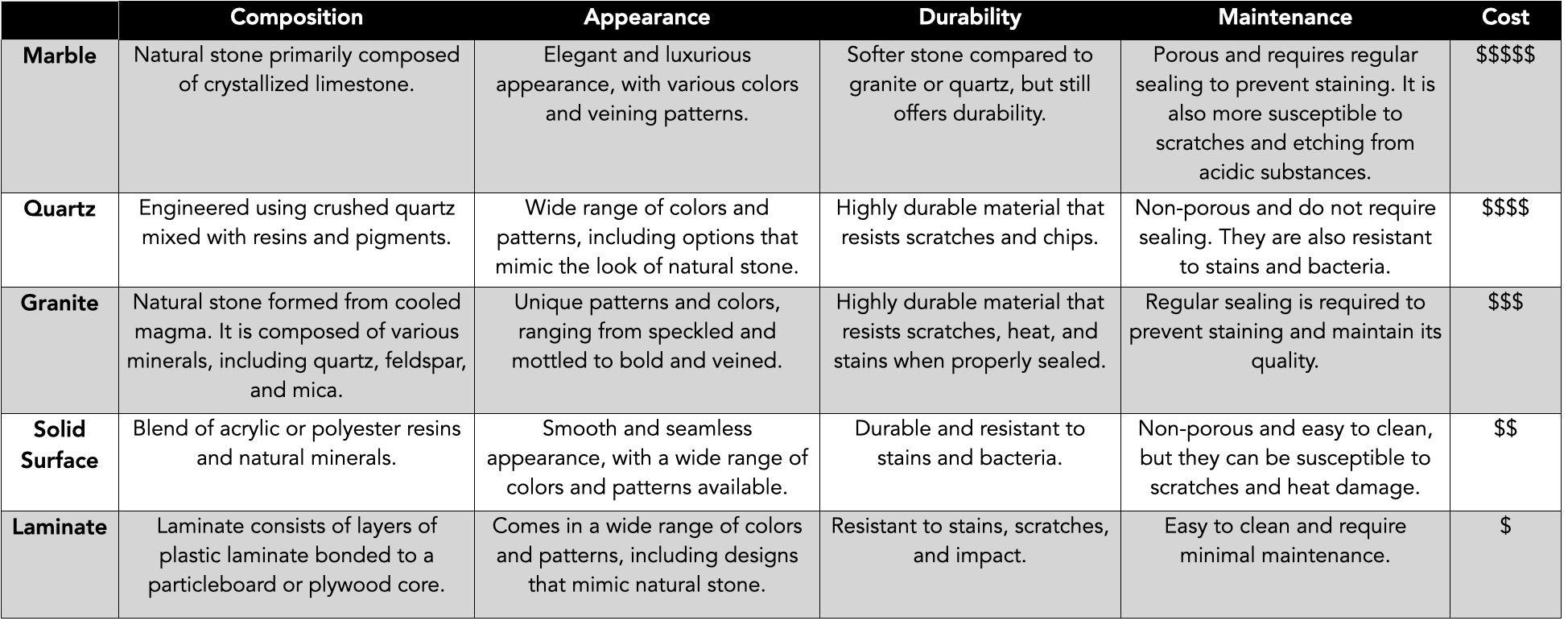The Ultimate Guide to Renovating Your Bathroom

Renovating your bathroom is a rewarding home improvement project that can enhance both the functionality and aesthetics of one of the most frequently used spaces in your home. Whether you’re looking to update outdated fixtures, create a spa-like retreat, or increase your home’s value, careful planning and informed decision-making are crucial. In this comprehensive bathroom renovation guide, we’ll walk you through the key steps involved in renovating a full bathroom, providing valuable insights and answering common questions along the way.
Bathroom Renovation 101: Where to Begin
Every well-designed home renovation needs to have an equally well-designed plan to go with it. This guide will walk you through the steps of making important decisions for your bathroom project, starting with a big-picture outlook on the goals for your project as well as highlighting some of the (many!) decisions you’ll need to make throughout the renovation, including:
- Assessing Your Bathroom Renovation Goals
- Planning and Designing Your Bathroom Renovation
- Create a Renovation Budget
- Bathroom Renovation Order and
Timeline - Exploring Different Types of Bathroom Vanities
- Considerations for Bathroom Countertops
- Selecting the Perfect Bathroom Shower or Tub
- Choosing the Right Bathroom Flooring
Assessing Your Bathroom Renovation Goals
Before diving into your bathroom renovation project, take the time to evaluate your goals and priorities. Ask yourself what you hope to achieve with the renovation. Are you primarily focused on improving functionality, updating the overall aesthetic, or a combination of both? Consider factors such as storage needs, lighting, fixtures, and any specific design preferences you may have.
Planning and Designing Your Bathroom Renovation
Planning allows you to establish a clear vision for your bathroom renovation and define your goals. It helps you articulate what you want to achieve with the project, whether it’s improving functionality, updating the style, increasing storage, or enhancing the overall value of your home. Having a well-defined vision ensures that your renovation aligns with your desired outcomes.
- Gather Inspiration: Explore various sources of inspiration such as home design magazines, websites, social media platforms, and visiting bathroom showrooms. Save images and create a mood board to help visualize your desired style and layout.
- Evaluating the Existing Space: Assess your current bathroom layout and functionality. Identify any limitations, plumbing requirements, or structural changes that may impact your renovation plans. Consider factors like available space, plumbing fixtures, ventilation, and natural lighting.
- Seeking Professional Assistance: Depending on the complexity of your renovation, consult with professionals such as bathroom designers, architects, or contractors. Their expertise can help you navigate design challenges, maximize space, and ensure compliance with building codes.
Creating a Budget
Establish a realistic budget for your bathroom renovation, taking into account materials, labor costs, permits, and any unforeseen expenses. Research average costs to gain a better understanding of what to expect.
Bathroom Renovation Order and Timeline
To streamline your bathroom renovation, follow a logical order of tasks. While there may be some variations based on specific circumstances, a general sequence includes the following steps:
- Demolition: Start by removing existing fixtures, tiles, cabinetry, and flooring. Ensure proper disposal of materials and protect surrounding areas.
- Plumbing and Electrical Work: Address any necessary plumbing or electrical modifications or repairs. Relocate or upgrade fixtures, install new water lines, and update wiring as needed. It is advisable to hire licensed professionals for these tasks.
- Structural Changes: If you plan to make structural alterations, such as moving walls or expanding the bathroom, this is the stage to address those changes. Consult with professionals to ensure safety and compliance.
- Walls and Ceiling: Repair or install new drywall, address any waterproofing requirements, and prepare surfaces for painting, tiling, or other wall finishes.
- Flooring: Install new flooring, choosing a material that is suitable for a bathroom environment. Options include ceramic or porcelain tiles, vinyl, natural stone, or waterproof laminate flooring.
- Bathroom Vanities: Install your chosen bathroom vanity, ensuring it fits the designated space and aligns with your style preferences. Consider factors such as storage capacity, countertop space, sink configuration, and materials.
- Bathroom Countertops: Select and install your preferred bathroom countertop material, such as granite, quartz, marble, or solid surface. Consider durability, maintenance requirements, and design cohesion with other elements.
- Showers or Tubs: Determine whether you prefer a shower or tub (or both) in your bathroom. Consider options like freestanding tubs, alcove tubs, walk-in showers, or shower and tub combinations. Ensure proper plumbing and installation.
- Fixtures and Accessories: Install faucets, showerheads, towel racks, toilet paper holders, and other bathroom fixtures. Pay attention to the finishes and styles that coordinate with the overall design.
- Lighting and Ventilation: Choose and install appropriate lighting fixtures, including overhead lights, vanity lighting, and accent lighting. Ensure proper ventilation through the installation or upgrading of exhaust fans.
- Final Touches: Apply paint or other wall finishes, install mirrors, hang shower curtains or glass enclosures, add storage solutions, and accessorize with towels, rugs, and decorative elements.
Exploring Different Types of Bathroom Vanities
When selecting a bathroom vanity, consider factors such as style, size, storage capacity, and functionality. Different types of bathroom vanities include freestanding vanities, wall-mounted vanities, double sink vanities, and floating vanities:
- Freestanding Vanities: Freestanding vanities are standalone units that sit on the floor and provide ample storage space for bathroom essentials. They typically consist of a cabinet with doors and drawers, a countertop, and a sink. Freestanding vanities are versatile and come in various styles, sizes, and finishes, making them suitable for different bathroom designs.
- Wall-Mounted Vanities: Wall-mounted vanities, also known as floating vanities, are attached to the wall, creating an open space beneath them. These vanities offer a sleek and modern aesthetic while providing a sense of spaciousness in the bathroom. Wall-mounted vanities can have drawers, shelves, or a combination of both for storage. They are ideal for smaller bathrooms or those seeking a contemporary look.
- Double Sink Vanities: Double sink vanities feature two sinks, providing separate washing areas and ample countertop space. They are popular in shared bathrooms or master bathrooms where multiple people need to use the space simultaneously. Double sink vanities come in various styles, ranging from freestanding to wall-mounted, and offer additional storage options to accommodate the needs of multiple users.
- Floating Vanities: Floating vanities, also referred to as wall-mounted vanities, are attached to the wall, creating the illusion that they are floating above the floor. This design choice not only enhances the visual appeal of the bathroom but also creates a more spacious and open atmosphere. Floating vanities can be found in various sizes, styles, and materials, and they often offer storage solutions such as drawers or shelves.
Considerations for Bathroom Countertops
Bathroom countertops should be durable, resistant to moisture and stains, and aesthetically pleasing. Popular options include granite, quartz, marble, solid surface, and laminate. Evaluate factors like maintenance requirements, cost, and design compatibility with other bathroom elements before making your selection.
Each type of countertop material has its own unique characteristics in terms of composition, appearance, durability, maintenance requirements, and cost. Considering these factors and your specific needs will help you make an informed decision when choosing a countertop material for your bathroom.
Selecting the Perfect Bathroom Shower or Tub
The type of shower or tub you choose for your bathroom depends on your preferences, available space, and budget. Options include freestanding tubs, alcove tubs, walk-in showers, shower and tub combinations, and custom-designed showers. Tip: consider factors such as functionality, ease of maintenance, water efficiency, and safety features.
- Freestanding Tubs: Freestanding tubs are standalone tubs that are not attached to any walls. They are often the focal point of a bathroom and can come in various shapes, such as clawfoot, pedestal, or modern designs. Freestanding tubs provide a luxurious and elegant look and are ideal for bathrooms with ample space.
- Alcove Tubs: Alcove tubs are designed to fit into a three-walled enclosure, with one side of the tub against a wall. They are a common choice for bathrooms with limited space, as they maximize the use of available wall space. Alcove tubs are typically more affordable and come in a range of sizes and styles.
- Walk-in Showers: Walk-in showers feature an open design without a bathtub and provide easy access without the need to step over a threshold. They are particularly popular among homeowners looking for a more accessible and convenient showering experience. Walk-in showers can be customized with various features like multiple showerheads, built-in benches, and decorative tiles.
- Shower and Tub Combinations: Shower and tub combinations combine a bathtub and a shower in one unit. They are a versatile option, offering the convenience of both bathing and showering in a single space. Shower and tub combinations come in different configurations, including a standard tub with a showerhead or a bathtub with a shower curtain or sliding glass doors.
- Custom-Designed Showers: Custom-designed showers are tailored to fit the specific needs and preferences of the homeowner. They allow for a high level of customization in terms of size, layout, materials, and features. Custom showers can include elements like rainfall showerheads, body jets, steam systems, niche shelving, seating, and personalized tile designs.
Choosing the Right Bathroom Flooring
Bathroom flooring should be water-resistant, durable, and slip-resistant. Common options include ceramic or porcelain tiles, vinyl, natural stone, and waterproof laminate. Tip: consider factors like style, comfort, maintenance, and budget when deciding on the most suitable flooring material for your bathroom.
- Ceramic or Porcelain Tiles: Ceramic and porcelain tiles are popular choices for bathroom tub and shower surrounds. They are made from clay fired at high temperatures, resulting in a durable and water-resistant material. Ceramic tiles are available in a wide range of colors, patterns, and textures, allowing for creative designs. Porcelain tiles are denser and less porous than ceramic tiles, making them even more water-resistant and suitable for high-moisture areas like showers.
- Vinyl: Vinyl is a synthetic material commonly used in bathroom flooring but can also be used for tub and shower surrounds. Vinyl sheets or tiles offer a budget-friendly and water-resistant option. They are relatively easy to install, maintain, and clean. Vinyl comes in various styles and designs, including options that mimic the look of natural materials like stone or wood.
- Natural Stone: Natural stone, such as marble, granite, slate, or travertine, can create a luxurious and elegant look for tub and shower surrounds. Each type of natural stone has its own unique characteristics and appearance, with a range of colors, patterns, and textures. Natural stone provides durability and a timeless aesthetic. However, it requires proper sealing and maintenance to protect against water absorption and staining.
- Waterproof Laminate: Waterproof laminate is a type of laminate flooring that is designed to be more resistant to water and moisture. While laminate is not typically recommended for direct water exposure, waterproof laminate offers better protection against moisture and can be suitable for tub and shower surrounds in some cases. It provides a cost-effective option with a wide range of styles and finishes.
Change Your Home with our Bathroom Renovation Guide
Renovating a full bathroom can be a transformative experience, and our comprehensive bathroom renovation guide was designed to assist you every step of the way. Within this guide, we walked you through the essential steps of a bathroom renovation, providing expert advice and tips on vanities, countertops, showers or tubs, and flooring. By assessing your goals, planning meticulously, following a logical order, and making informed decisions, you were able to achieve a bathroom that perfectly reflected your style and met your needs. Throughout the process, you prioritized quality materials, sought professional assistance when needed, and enjoyed the journey of creating a space that enhanced your daily life. With our trusted bathroom renovation guide, you have unlocked the secrets to a successful bathroom renovation.
If you have any additional questions during your search for the perfect copper, fireclay farmhouse sink, or crafted stainless steel sink, our Sinkologists are here to help. Contact us or follow us on Facebook, Houzz, Pinterest, Instagram, or TikTok for more helpful tips and design ideas.

